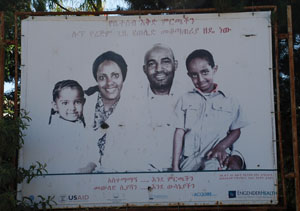2.3 Family planning programme communications
Communication activities are an integral part of virtually every family planning programme. They are used to promote the idea of family planning programmes, as well as specific contraceptive methods, and to highlight locations where services and products are available. Almost all media are used to promote family planning communications, including radio, television, billboards and brochures.
Stop reading for a moment and think about this from your own experience.
The above paragraph indicates that there should be promotional activities in terms of communicating the family planning programme. How best can you reach all the people living in your area in this regard? Would there be enough local media to convey information and messages to everyone?
There are a number of traditional forms of entertainment useful for transmitting information and messages on family planning methods in small towns and villages, where more advanced communication media are lacking. Such forms include role plays, folk songs, theatre and puppet shows. Posters can also carry educational messages (Figure 2.2).

The importance of the family planning programme can also be communicated through interpersonal communication, for example by involving ‘satisfied users’ who are given materials to distribute to their friends and members of their communities. In the Ethiopian context, a successful model household can be used to communicate the message to their peers.
Part of your future role will be to identify all potential means of communication available in your localities, so that you will be able to make use of them in communicating aspects of the family planning programmes in your community. For more details, refer to your Health Education, Advocacy and Community Mobilisation Module.
2.2.3 Managing contraceptive supply
